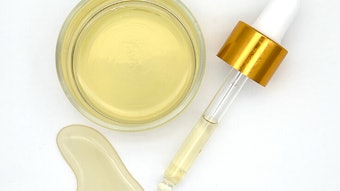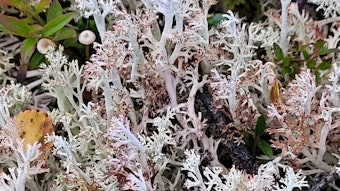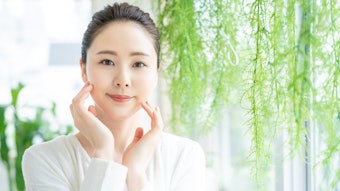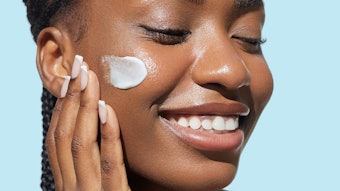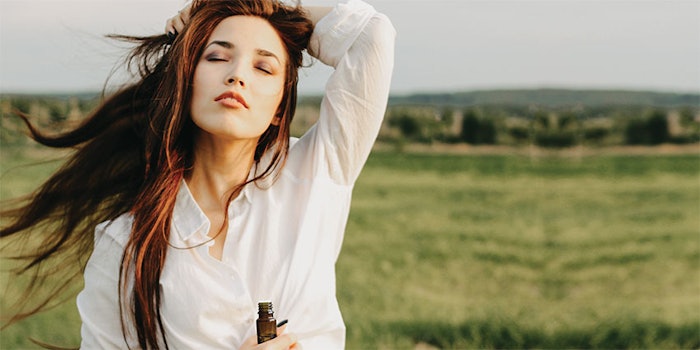
Read this article in its entirety in the May 2020 digital edition. . .
The use of plants and plant products for medicinal and therapeutic purposes has been around since the beginning of civilization. The Eber Papyrus, an Egyptian documentation of herbal knowledge, shows that medical “prescriptions” were in use as early as 1800 B.C.1 Even earlier, the foundation for medical science of the Hindu culture originates in ayurveda, a therapy traditionally comprising herbal compounds and minerals. Ayurveda is mentioned in the Rigveda, one of the oldest repositories of human knowledge, which was written between 4500–1600 B.C.2
The use of clove (Eugenia caryophyllus), in particular, is reported as far back as 240 B.C. in China, where it was cited for apparent medicinal purposes. Over the years, clove has been taken orally to treat diarrhea as well as liver, stomach and bowel ailments. It has been used to combat toothaches and for mouth and throat inflammation. And, especially in tropical Asia, clove has been used for treatment of conditions such as scabies, cholera, malaria and tuberculosis.3 To this day, clove is widely employed in holistic medicine in several countries for the treatment of colds, dental abscesses, gum disease, earache and arthritis pain. Moreover, it has anti-fungal, anti-convulsant, anti-cancer and anti-mutagenic activities.2
Clove also has proven to be one of the most valuable and beneficial spices for food preservation. The spice originally was derived from the flower buds of the plant—a medium-sized tree native to the Maluku islands in east Indonesia. In modern times, the flower buds are collected from trees in Indonesia, India, Malaysia, Sri Lanka, Madagascar and Tanzania for various commercial uses.4
In a 2005 study,4 clove was tested alongside 25 other phytochemical-rich spices for antioxidant activities and phenolic contents. In fact, these constituents had been investigated for more than 60 years, although the multiple measurement methods used have made it difficult to directly compare results among studies. The total antioxidant capacity and phenolics content of the 26 spice extracts sought to identify the major phytochemicals present to establish a relationship between antioxidant activity and phenolic content, and thereby confirm the source of this activity.
Among the spices tested, clove had the highest antioxidant capacity and was by far the richest in hydrolyzable tannins and total flavonoids. It also contained particularly high concentrations of gallic acid, a well-studied phenolic compound, in addition to ferulic, ellagic and salicylic acids, and various tannins such as tellimagrandin I.5
Interestingly, regarding the latter, previous work by the authors (see Figure 1) has found that tellimagrandin I has a significantly higher antioxidant potency than vitamins C and E, which are major antioxidant benchmarks. In addition to antioxidant activities,4, 6 clove and its active constituents have been found to demonstrate effects including antimicrobial/antifungal;2, 7, 8 antinociceptive;9 antiviral;8 aphrodisiac, with circulation-stimulating capacities;3 and anti-cancer.10
Considering the scientific and anecdotal evidence supporting the effects of clove for skin and health in general, the authors developed a skin care ingredient based on clove extract and tested its capabilities. To ensure the extract comprised all the plant’s key phytoconstituents, a proprietary extraction method was developed based on high energy dynamic processing to efficiently liberate active phytochemicals.
The resulting clove flower extract was characterized (data not shown; see comments in Letter to Editor, Qualifying Questions on Clove-based Ingredient) and its predominant active was found to be gallic acid, both as the free acid and within hydrolyzable tannins. Further, while all the typical components contributing to the potency of clove were present, tellimagrandin I was the predominant active species this specific clove extracta.
Among the many benefits observed for this bioactive material, here the authors sought to characterize the antioxidant and skin lightening effects of the test clove extracta, along with its potential to help preserve the extracellular matrix (ECM). Radical scavenging, anti-enzymatic activity, anti-tyrosinase effects and epigenetic benefits for skin were tested, as described here.
Antioxidant Effects
UV-induced lipid peroxidation: Several external factors such as sunlight and pollution can induce inflammation generated by reactive oxygen species (ROS). These disrupt processes essential for cell survival. Harmful effects of ROS on cells are most often due to DNA and RNA damage, lipid peroxidation, oxidation of amino acids in proteins, and deactivation of specific enzymes by the oxidation of co-factors.11
Lipid peroxidation, or the oxidative degradation of lipids, is a damaging process in which free radicals typically react with unsaturated fatty acids in cell membranes to create lipid radicals. As these radicals react with adjacent fatty acids, they create additional lipid radicals in a chain reaction. Once there is a high enough concentration of radical species, thus increasing the chances of a collision between them, the reaction will stop when two radicals react to produce a non-radical. The end results of lipid peroxidation are damaged cell membranes and the production of reactive aldehydes, such as malondialdehyde, which are themselves highly reactive and damaging to cellular components. These aldehyde breakdown products are commonly measured as an indication of lipid peroxidation.12
Test protocol: Phospholipid liposomes were exposed to ultraviolet (UV) light in the presence of varying concentrations of the test clove extract. Irradiated samples were harvested at different time points and analyzed for the presence of malondialdehyde. The levels observed at different time points of UV exposure were used to calculate rates of lipid oxidation. The percent inhibition of the rate of oxidation is expressed as the percent antioxidant activity (see Figure 2).
Results: The results showed the test clove extract effectively prevented UV-induced lipid peroxidation. This protection is perhaps the most important for UV-exposed skin.
Singlet oxygen scavenging: Singlet oxygen (SO) is not a free radical but is nevertheless a reactive oxygen species and capable of causing tissue damage. Production of SO in the skin can occur through a number of mechanisms. It can be generated from reactions of other ROS, such as hypochlorous acid, hydrogen peroxide and peroxyl radicals, which are produced and released in large amounts at sites of inflammation. SO also is produced as a result of photosensitization reactions when the skin is exposed to light.13
Test protocol: Reaction mixtures containing varying concentrations of the test clove extract and a photosensitive dye were exposed to visible light in order to generate SO. Subsequent oxidation of iodide by SO was measured. The percent inhibition of the rate of iodide oxidation is expressed as the percent antioxidant activity (see Figure 3).
Results: The tests showed the clove extract effectively inhibited oxidation by SO by 50% at a concentration of only 0.13%.
Anti-enzymatic Effects
Leukocyte elastase: The ECM is comprised of macromolecules such as collagen, elastin and glycoproteins. When arranged properly, the ECM is responsible for cell attachment and influences cell survival, proliferation, polarity, differentiation and migration.14 As skin experiences stress from the environment, i.e., UV light, pollution, smoke, etc., cellular repair mechanisms lessen, and overall ECM damage increases, which becomes visibly pronounced as fine lines and wrinkles. The causes of this damage are the generation of free radicals, the formation of abnormal proteins, and the release of degradative enzymes, predominantly leukocyte elastase15 and matrix metalloproteinases (MMPs).16
Inflammation in the skin resulting from UV damage causes the release of elastases from neutrophils and fibroblasts. Leukocyte elastase is a serine protease that has broad substrate reactivity and will destroy both bacteria and the host tissue. As such, serine proteases are important mediators of ECM degradation.
Test protocol: In relation, the inhibition of human leukocyte elastase was measured by comparing the rates at which this enzyme cleaved a substrate peptide in the presence or absence of varying concentrations of the test clove extract. The optical density of the reaction mixture changes as the peptide is cleaved, and the rate of this change is a direct measurement of enzyme activity.
Results: The results showed (see Figure 4) the clove extract to be a powerful inhibitor of leukocyte elastase, with well over 50% inhibition at a concentration of only 0.02%.
Matrix metalloproteinase activity: As previously stated, oxidative stress or UV light damage to keratinocytes and fibroblasts activates a spectrum of enzymes known as MMPs. These are responsible for degrading ECM proteins such as collagen, fibronectin, elastin and proteoglycans, thus contributing to photoaging.16
The imbalance created by this degradation of ECM components, along with their decreased synthesis and renewal due to aging, results in fine lines and wrinkles. The collagenases, a subgroup of MMPs including MMP-1 and MMP-8, are especially damaging to collagen, which is one of the most important structural components of the skin.
Test protocol: The protective capabilities of the test clove extract against these damaging proteases were therefore assessed. The inhibition of MMPs was measured by comparing the rates at which these enzymes cleaved a substrate peptide in the presence or absence of varying concentrations of the extract. The fluorescence of the reaction mixture changes as the peptide is cleaved, thus the rate of this change is a direct measure of the enzyme’s activity.
. . .Read more in the May 2020 digital edition. . .
References
- J F.A. (1996). Herbs-useful plants. Their role in history and today. Eur J Gastroenterol Hepatol, 8 1227-1231.
- Joshi, B., Sah, G.P., ... Malla, R., et al. (2011). Phytochemical extractions and antimicrobial properties of different medicinal plants: Ocimum sanctum (tulsi), Eugenia caryophyllata (clove), Achyranthes bidentate (datiwan) and Azadirachta indica (neem). J Microbiol Antimicrob 3(1) 1-7.
- Bhowmik, D., Sampath Kumar, K.P., Yadav, A., Srivastava, S., Paswan, S. and Dutta, A.S. (2012). Recent trends in Indian traditional herbs Syzygium aromaticum and its health benefits. J Pharmacogn Phytochem 1 13-22.
- Shan, B., Cai, Y.Z., Sun, M. and Corke, H. (2005). Antioxidant capacity of 26 spice extracts and characterization of their phenolic constituents. J Agric Food Chem 53 7749-7759.
- Cortes-Rojas, D.F., Fernandes de Souz, C.R. and Oliveira, W.P. (2014). Clove (Syzygium aromaticum): A precious spice. Asian Pac J Trop Biomed 4(20) 90-96.
- Al-Sayed, E. and Esmat, A. (2016). Hepatoprotective and antioxidant effect of ellagitannins and galloyl esters isolated from Melaleuca styphelioides on carbon tetrachloride-induced hepatotoxicity in HepG2 cells. Pharmaceutical Biology 54(9) 1727-1735.
- Nascimento, G.G.F., Locatelli, J., Feitas, P. and Silva, G.L. (2000). Antibacterial activity of plant extracts and phytochemicals on antibiotic-resistant bacteria. Braz J Microbio 31 247-256.
- Shiato, S., Shimizu, M., Sugiyama, J., Morita, Y., Mizushima, T, and Tsuchiya, T. (2003). Mechanisms of action of Corilagin and Tellimagrandin I that remarkably potentiate the activity of b-Lactams against methicillin-resistant Staphylococcus aureus. Microbio Immunol 48(1) 67-73.
- Uddin, Md.A., Shahinuzzaman, M., Rana, S. and Yaakob, Z. (2017). Study of chemical composition and medicinal properties of volatile oil from clove buds (Eugenia caryophyllus). Int J Pharm Sci 8(2) 895-899.
- Miyazawa, M. and Hisama, M. (2001). Suppression of chemical mutagen-induced SOS response by alkylphenols from clove (Syzygium aromaticum) in the Salmonella typhimurium TA1535/pSK1002 umu test. J Agric Food Chem 49 4019-4025.
- Brooker, R.J. (2011). Genetics: Analysis and Principles, 4th edn, McGraw-Hill Science. ISBN 978-0-07-352528-0.
- Hassan, H.A. and El-Aal, M.A. (2012). Lipid peroxidation end-products as a key of oxidative stress: Effect of antioxidant on their production and transfer of free radicals. IntechOpen, doi: 10.5772/45944.
- Zebger, I., Snyder, J.W., ... Ogilby, P. R., et al. (2004). Direct optical detection of singlet oxygen from a single cell. Photochem Photobiol 79(4) 319-322.
- Kusindarta, D.L. and Wihadmadyatami, H. (2018). The role of extracellular matrix in tissue regeneration. IntechOpen, doi: 10.5772/intechopen.75728.
- Takeuchi, H., Gomi, T., Shishido, M., Watanabe, H. and Suenobu, N. (2010). Neutrophil elastase contributes to extracellular matrix damage induced by chronic low-dose UV irradiation in a hairless mouse photoaging model. J Dermatol Sci 60 151-158.
- Pittayapruek, P., Meephansan, J., Prapapan, O., Komine, M. and Ohtsuki, M. (2016). Role of matrix metalloproteinases in photoaging and photocarcinogenesis. Int J Mol 17(6) 868.
Captions/Footnotes:
a Tellirictin (INCI: Water (Aqua) (and) Glycerin (and) Eugenia Caryophyllus (Clove) Flower Extract) is a product of Biocogent, LLC.




